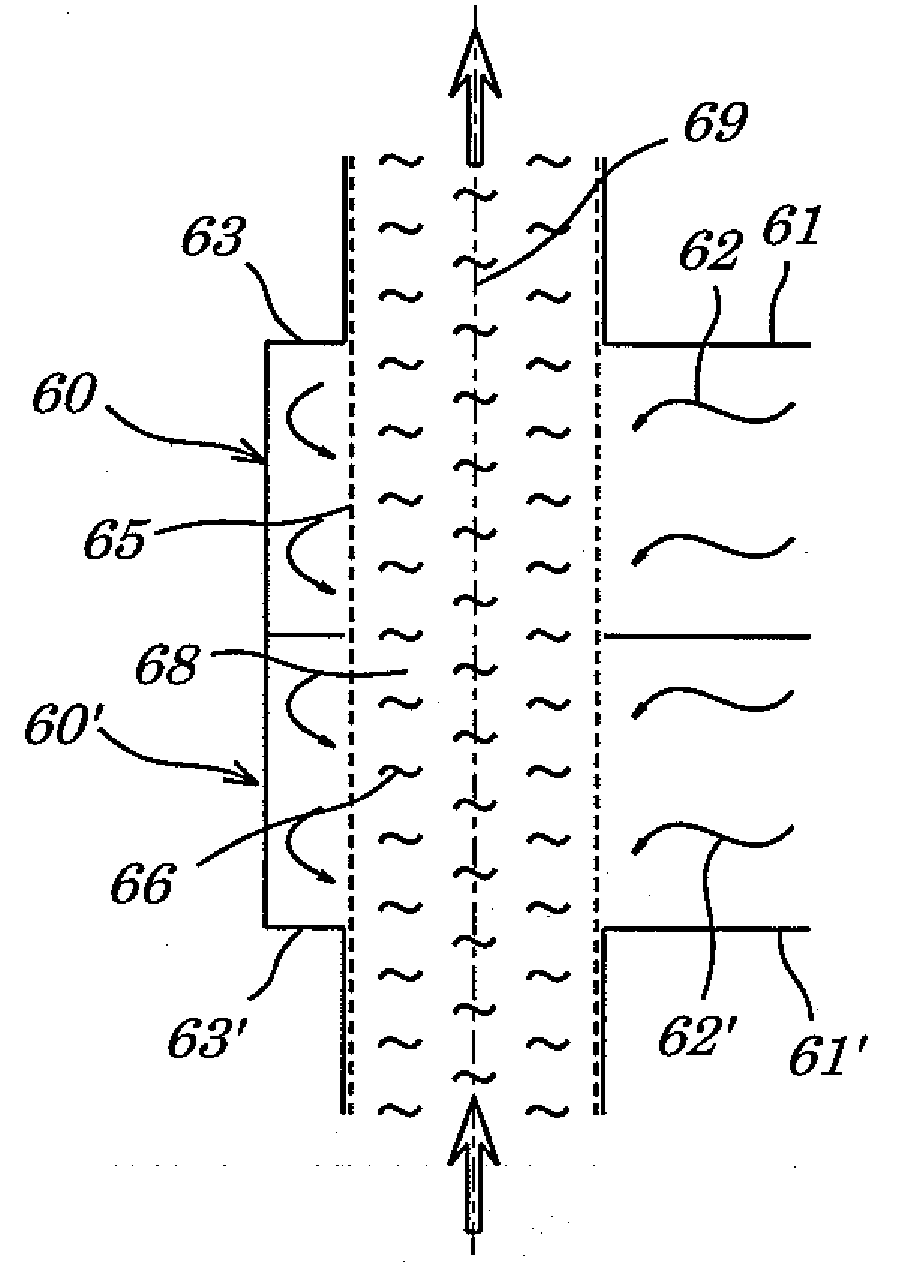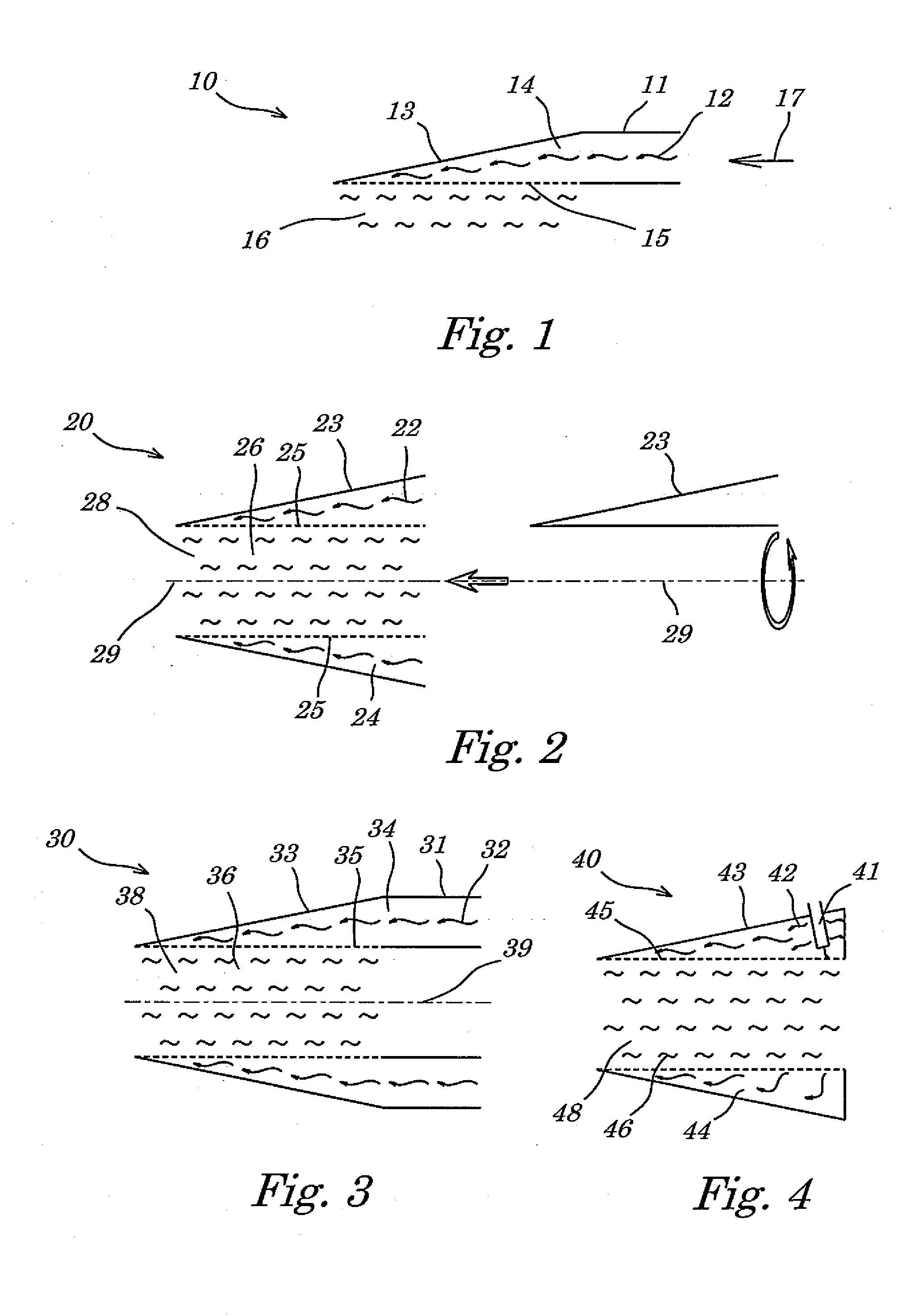Applicator and apparatus for heating samples by microwave radiation
a microwave radiation and microwave technology, applied in microwave heating, chemical vapor deposition coatings, coatings, etc., can solve the problems of inhomogeneous heating of samples, small penetration depth of microwaves into samples, and gas generation or expansion inside the vessel will necessarily increase the internal pressure, so as to achieve effective microwave radiation transmission, increase the dielectric constant, and suitable impedance matching
- Summary
- Abstract
- Description
- Claims
- Application Information
AI Technical Summary
Benefits of technology
Problems solved by technology
Method used
Image
Examples
Embodiment Construction
[0060]In FIG. 1 a first embodiment of the microwave applicator 10 according to the invention is shown. The applicator 10 consists of a waveguide 11 coupling microwave radiation (depicted as undulating arrows 12) which is transferred from a source of microwave radiation (not shown in FIG. 1) to a tapering portion 13 of the applicator 10. Waveguide 11 and tapering portion 13 of the applicator are made from conductive metal sheets and define the external walls of a hollow tube 14 in which the microwave radiation 12 propagates. In a portion of the wall defining the tapering portion of the transmission duct 13, an interface 15 (depicted in dashed lines) is provided. The interface 15 made from a material which is partially permeable to microwave radiation. Beneath the interface 15, a sample 16 to be heated by microwave radiation is arranged. Although the general direction of propagation of the microwave radiation inside the applicator 10 is essentially parallel to the interface 15 as depi...
PUM
| Property | Measurement | Unit |
|---|---|---|
| wavelengths | aaaaa | aaaaa |
| frequencies | aaaaa | aaaaa |
| pressure | aaaaa | aaaaa |
Abstract
Description
Claims
Application Information
 Login to View More
Login to View More - R&D
- Intellectual Property
- Life Sciences
- Materials
- Tech Scout
- Unparalleled Data Quality
- Higher Quality Content
- 60% Fewer Hallucinations
Browse by: Latest US Patents, China's latest patents, Technical Efficacy Thesaurus, Application Domain, Technology Topic, Popular Technical Reports.
© 2025 PatSnap. All rights reserved.Legal|Privacy policy|Modern Slavery Act Transparency Statement|Sitemap|About US| Contact US: help@patsnap.com



